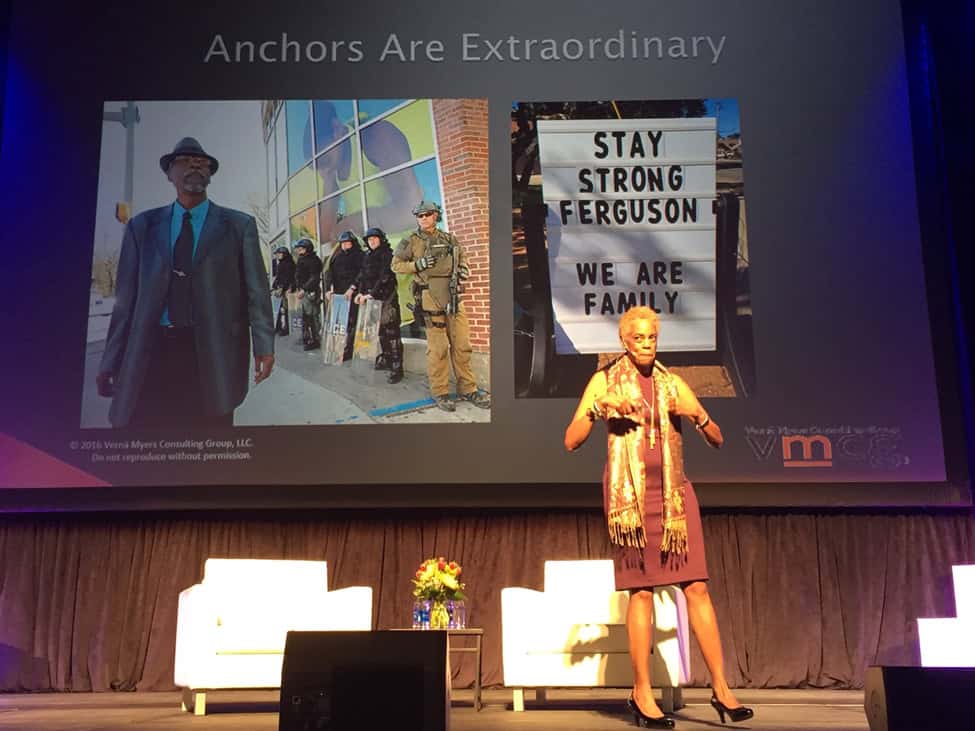
Vernā Myers, an African American woman who grew up in a Baltimore working class family, graduated from Harvard Law School, and became an entrepreneur, author, and cultural innovator. For the last 20 years, she’s been working to help eradicate barriers of race, gender, ethnicity, and sexual orientation at elite international law firms, Wall Street businesses, and even the New York Fire Department to help create a more productive and just status quo. She was the featured Big Ideas speaker for the Public Library Association 2016 conference.
She told the story of her first visit to China, and found herself the object of stares. Everyone was looking at her, and it didn’t feel good.
“Why are these people staring at me?” she thought.
She asked a Chinese associate to explain what was happening, and he said it was common for Chinese people to stare if they found something unusual. Myers decided she needed to change her lens—she had been using her mother’s lens, “You do not stare at people,” and her US lens, “When people are staring at you, it’s not a good thing.” So she went back outside with her new lens and waved to people who were staring. They waved back, and they wanted to pose for photos with her. “It was a straight-up love fest, and I had misinterpreted it.”
“We think we are so neutral about so many things, and we’re not so neutral,” she said.
In her talk, Myers outlined a number of ways to break out of biased patterns, such as remembering that all cultures are valued, to get more curious, to let go of the golden rule that you should treat everyone as you’d like to be treated and instead treat people as they would like to be treated, and to embrace your bias so you know where your blind spots are.
Using Harvard’s Implicit Association Test, even kids as young as 4 or 5—regardless of their race—are already biased towards lighter skin versus darker skin, and European American faces versus African American faces.
Myers suggested that attendees who want to change their biases should slow down and remember what they’re primed to see, to question conclusions, look for information that disconfirms what they now believe, and think of counterexamples.
“Understand privilege and use it to interrupt bias when you see it,” she said. Doing this takes work. It requires expanding the comfort zone by being uncomfortable at times and sometimes saying the wrong thing. There is value in trying, though, she says.
“You are the anchors in so many lives. Why not be extraordinary at anti bias and inclusiveness?” Through that, librarians can help create new opportunities for others, and “rectify the tilt” of inequality.


